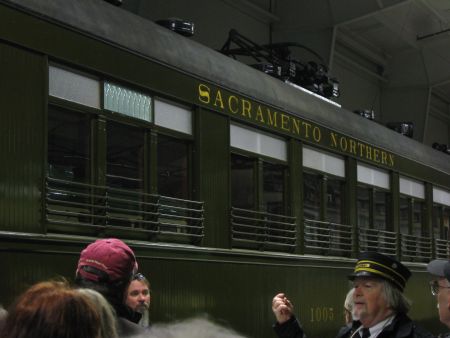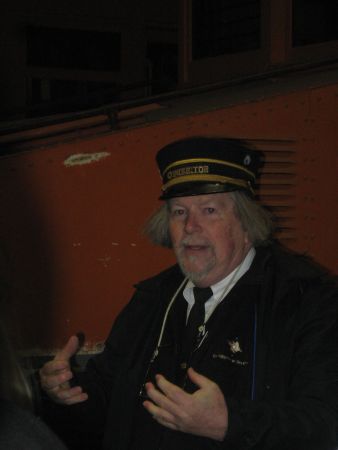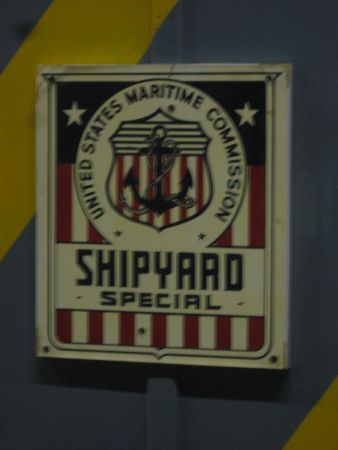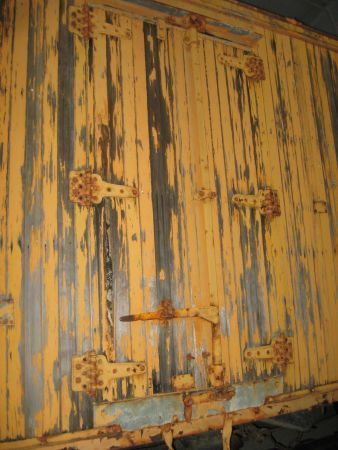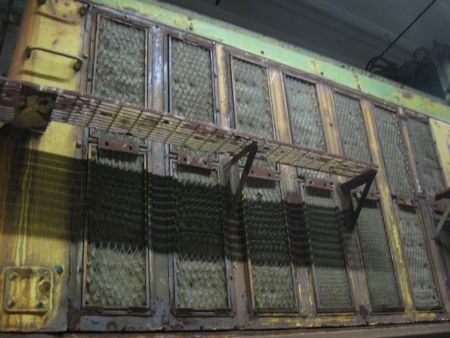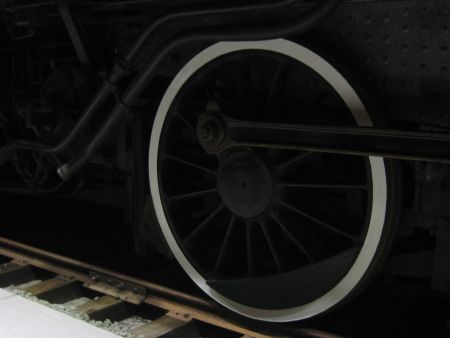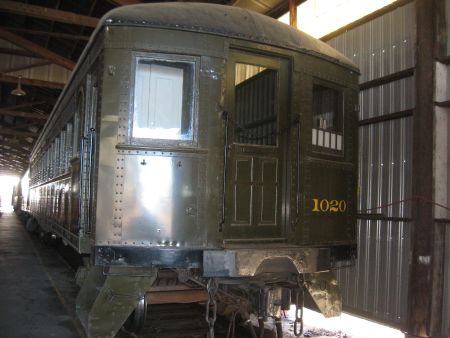The museum has a $2 million car house, temperature and humidity controlled with low UV light. Our docent told us to think “wine cave” when we think of the building; it’s about the same idea. The temperature is maintained less by HVAC than by the thick walls and deep insulation. He said the temperature in the building runs in a range of about 50 degrees to 70 degrees. Sounds pretty wide. The outside temps range, seasonally, from 20 degrees to 107 degrees.
UV light is the big culprit in deterioration, according to our guide. The lighting is archival-quality, low UV.
The Big Artifacts:
In this large space they have the restored cars in the collection,and a series of cars in various states of disrepair that are scheduled to be worked on. They have another car house that is open at the ends and a large red building they moved from San Francisco, that they plan to refurbish in the next couple of years.
In the “wine cave,” though, they have a couple dozen beautiful engines and cars that are brought out for special events, like the upcoming wine train ride that starts in the late spring, and the wildflower ride. Some cars are in there for their historical value, like the old gray car with yellow streaks. My picture is blurry, but this is oldest car in the museum’s collection. Built in 1887, the car got moved to Oakland area in the 1940s when the Hunter’s Point shipyards opened. The work brought thousands of people into the area, and the cars were used to bring them from their houses, apartments, boarding houses and hotels to the shipyards to work their shifts. Anyone who has spent time in the San Francisco Bay Area knows that there is a certain atmospheric event that happens in morning and evenings when the air on the land cools, and the air coming off the ocean is still slightly warm. It’s called fog. In this fog, a gray train car becomes virtually invisible. After several collisions with cars and other trains, they added yellow stripes to the sides of the cars.
The badly deteriorated refrigerator car was perfectly restored when it was given to the museum in the early 1960s, but 40 years of UV light, rain, frost and sun took their toll. This car is scheduled for restoration. Our docent explained the purpose of this car, in the 1940s. The edges of the car were lined, thickly, with blocks of ice. The interior was filled with vegetables (his example, iceberg lettuce from the California Central Valley). The car would head east, stopping in Utah and a couple other places — I remember Elkheart, Indiana — to be “re-iced” before stopping in the New York produce markets. “This is why when I was a little boy in Pennsylvania,”” he said, “I could have lettuce on my sandwich for lunch, even though we don’t grow lettuce in Pennsylvania in February.”
Theft and vandalism are also risks for car that were left sitting outside. This one was hit by copper thieves, who stripped every scrap of copper and bronze from it.
The Competition:
The collection includes one, and only one, steam engine, and this is it. This is an electric railway museum, but train folks are train folks and there is always, as our docent said, “cross-pollination.”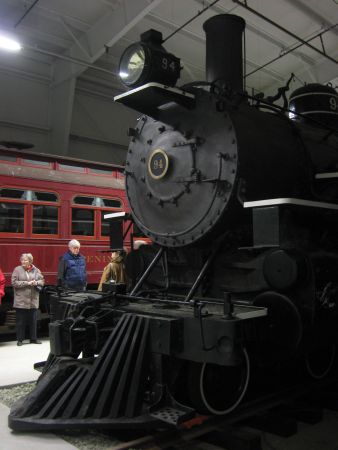
They have run Old 94 on the tracks once, but its size and weight are a risk. It is big and heavy enough to tear up the tracks built for a lighter train.
Fund-raising:
The museum is a 501(c)3 and exists almost entirely on fund-raising. When they were building the carhouse, their executive director suggested advertizing that a door in the building would be named after anyone who donated more than $15,000. (There are six doors into the building.) Our docent thought that nobody would donate just to get a door named after them, but five of the six doors are named after donors. Actually, the donors are all listed on a handsome metal plaque above one door.
As we were finishing up the tour, the docent suggested that if anyone donated $25 or more, he would name a rivet after them.
Before and After Restoration
Lillian and I walked up to the open car house. We ran into our tour docent again and he directed me to these two identical cars; car 21 and car 19. This is the “before” and “after” of restoration.
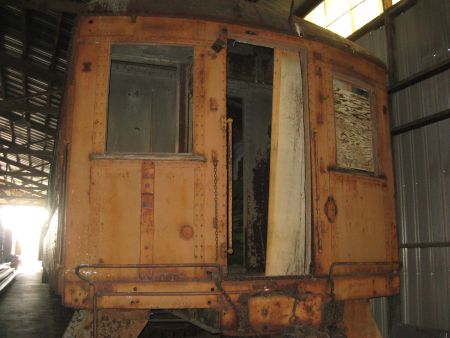
The Entire Collection:
The rail cars are the biggest artifacts the museum has, but they are not limited to train cars. They have thousands of photographs and documents memorializing the era of electric rail.

